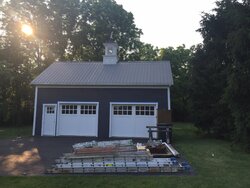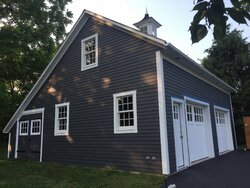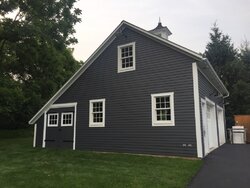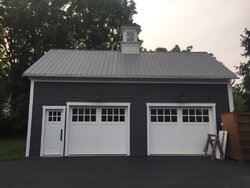It's time to choose the siding, and thus the contractor who will be finally finishing my barn project. One wants to do Board and Batten, the other was agreeable to my original suggestion of horizontal 1x6 clapboard.
Here's the barn as it stands, with the new doors Photoshop'd in place (they're being made now). Which way would you go, and why? I have to admit, I have more concerns about rot and water intrusion around window casings with board and batten, versus clapboards.
Being a big fan of classic New England (eg. Newport) clapboard style, I was partial to the clapboards. Price is roughly the same either way, or close enough that price is not a factor.
Thanks!
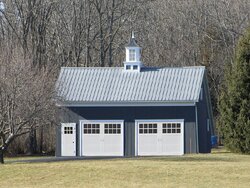
Here's the barn as it stands, with the new doors Photoshop'd in place (they're being made now). Which way would you go, and why? I have to admit, I have more concerns about rot and water intrusion around window casings with board and batten, versus clapboards.
Being a big fan of classic New England (eg. Newport) clapboard style, I was partial to the clapboards. Price is roughly the same either way, or close enough that price is not a factor.
Thanks!



